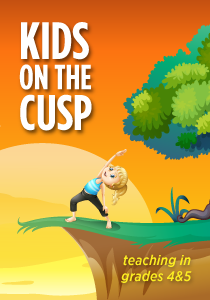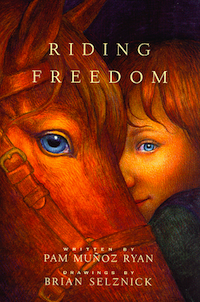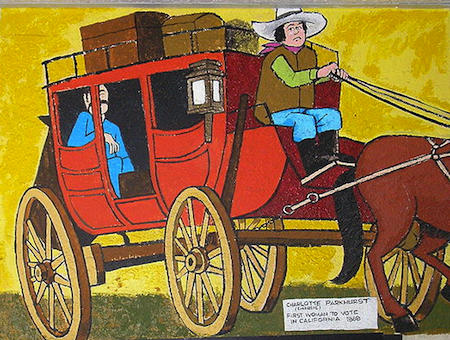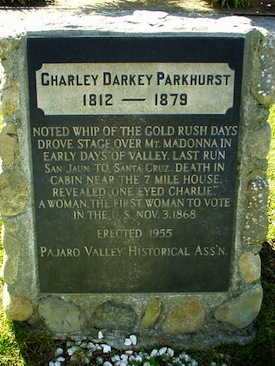‘Tween Curriculums: Exploring History via Fact-Filled Fiction
A MiddleWeb Blog

I’m not totally comfortable with my ability to click around effectively with the use of two eyes, but I am making strides in this area. I’m new in the technology saddle.
The eyepatch also offered my students a chance to laugh with me as I attempted to adapt to my new perception, tapping the pen a little to the left, then a little to the right, before hitting the mark and opening up the calculator feature.
We were exploring the mathematical relationship between fractions, decimals, and percents. The lesson went well. Twenty-three eyes eagerly awaited the opportunity to share their answers. The other 23 had eyepatches on them, just like I did. Fair is fair (which ties into probabilities, but we haven’t looked at that connection just yet).
Across the wide curriculum

Historical fiction is a perfect genre to use for reaching across the curriculum by reaching into the past. The bigger questions we are striving to answer in Social Studies lend themselves beautifully. As readers, we become historians, the social scientists who make connections to the past.
We were wearing the eyepatches because we were winding up our unit on historical fiction, using Riding Freedom by Pam Muñoz Ryan, as our daily read aloud. It’s based on the true story of Charlotte Parkhurst, an orphan who escaped from her life in New England, disguised herself as a man, and traveled west, becoming a stagecoach driver during the height of the Gold Rush.
We were trying to truly empathize with Charley. Shortly after her arrival in California, amidst the backdrop of the wild and untamed west, our main character is injured and completely loses the vision in her left eye. Charlotte’s fierce determination prevails, and she becomes “One-Eyed Charley,” respected and revered “whip.” She also becomes the first woman to vote (illegally and disguised as a man) for President of the United States.

Cross connections
The social studies connections within Muñoz Ryan’s story are innumerable. I had never had the opportunity to explore them more thoroughly, or to develop lessons that tie them all together.
I’ve recently had my eyes (and my mind) open enough to discover some new resources to help enhance this novel, our social studies curriculum, and our new reading and writing workshop philosophy (maybe the eyepatch during fractions and percents doesn’t really count as making a cross-curricular connection to math, but I’m trying!)
Some other eye-opening ideas from respected colleagues:
- Westward Expansion, the Gold Rush, and the Pony Express are some of the topics we have listened to as we walk around the perimeter of our school twice a week, listening to podcasts from the Walking Classroom. We develop our schema about the history of the United States and get some fresh air and exercise. My friend and colleague Laura Fenn introduced me to this new way of teaching.
- In a recent training session on incorporating social studies topics into Reading and Writing Workshop using multiple sources, our TCI trainer Christine Lagatta said something so beautifully simple. She said, “My go-to question is always, ‘What was life like for…fill in the blank.’” My eyes (and ears) were open at the time.
The evidence we discover about a topic and our understanding of that topic does lie in asking the deeper questions, but deeper doesn’t have to be complicated.
Sorting out the facts and fiction

They know that the genre of historical fiction is based on historical people and historical facts. They just didn’t realize that a character they had come to love and respect really existed. Their reaction was tremendous.
As we gathered on the rug and read the Author’s Note from Muñoz Ryan, it allowed us to review the genre of historical fiction and its ability to teach us about the past, as well as entertain us with a great read.
It also helped us explore the concept of using facts to formulate opinions, and, perhaps more importantly, to discern the difference between the two as best we can. This is a much needed skill when studying history…and present-day life as well.
There are two writing assignments I am having the kids complete as we end our unit. Different writing assignments require different resources.
The first is an opinion piece: “Do you think it was right that Charlotte voted for President of the United States?” The second asks them to apply what they’ve learned: “What was life like in our country during the 1800s?”
I will remind them that they need to back up their thoughts and ideas with evidence. They have plenty of evidence. I’ve given them multiple resources to rely on, including:
- Three textbooks with informational writing, text boxes, images, maps, graphs, and timelines.
- A novel that captured our imaginations as we looked at the “fictional” life of a woman living during that time in history
- Multiple podcasts about the changes that took place in our country after our purchase of the land west of the Mississippi, life as a rider for the Pony Express, the dangers of being involved in the Underground Railroad, and the convention held for women’s rights in Seneca Falls, New York.
- Access to Internet images of life in those times.
- A structure that they can use as a guide to write a strong response that begins with a thesis, supports this thesis, and brings our thoughts full-circle.
I get a little sad when I finish a really good unit, when I leave old connections and inspirations and forge ahead toward the new and undiscovered. We must move forward. I’m just thankful I don’t have to do it in a covered wagon….
Deeper collaboration
The changes in education seem slower than a transcontinental trip across the country on horseback at times, but I am keeping my eyes open for ways to close the widening gap and deepen the understandings. (Here’s a list of interesting picture and chapter books about the 1850s that I plan to mine for gold. And also a general resource on historical fiction for kids.)
I will be meeting with colleagues from across our district at the end of April. They also possess Charley/Charlotte’s fierce determination. We are going to share our thoughts and ideas about how to make connections between our new literacy program and our recently redesigned (core standards) social studies curriculum. I’m looking forward to some fresh perspectives.



































